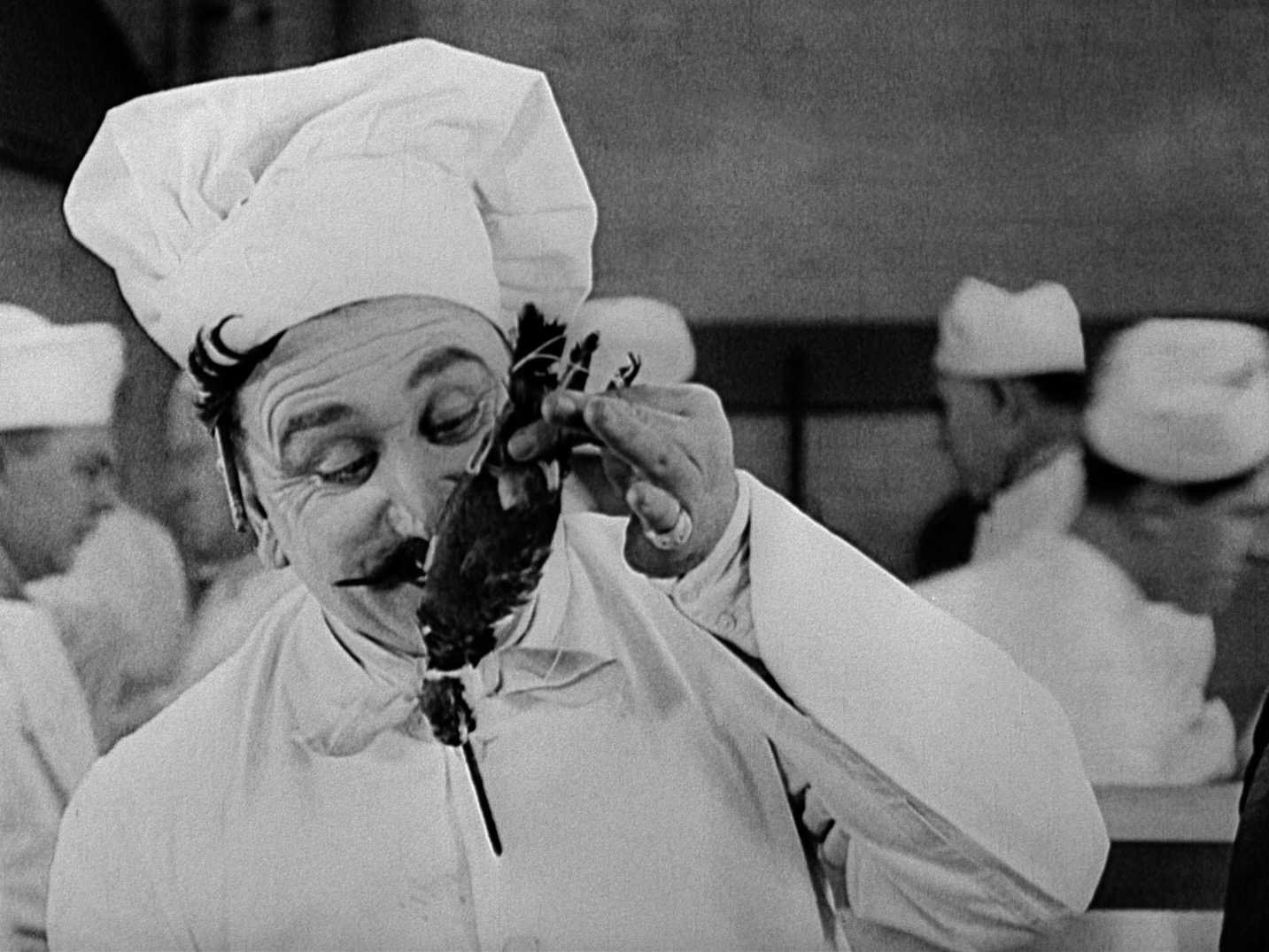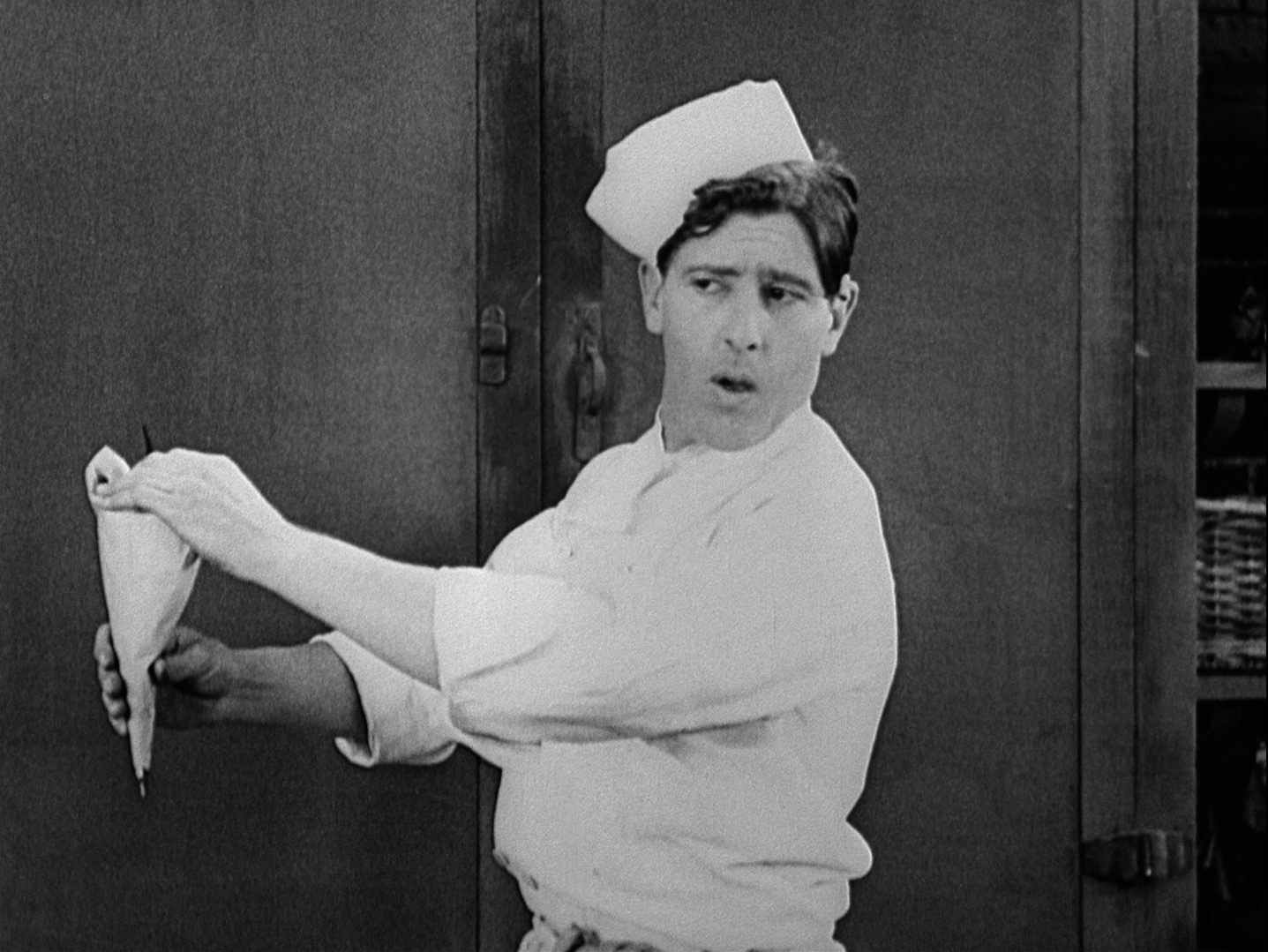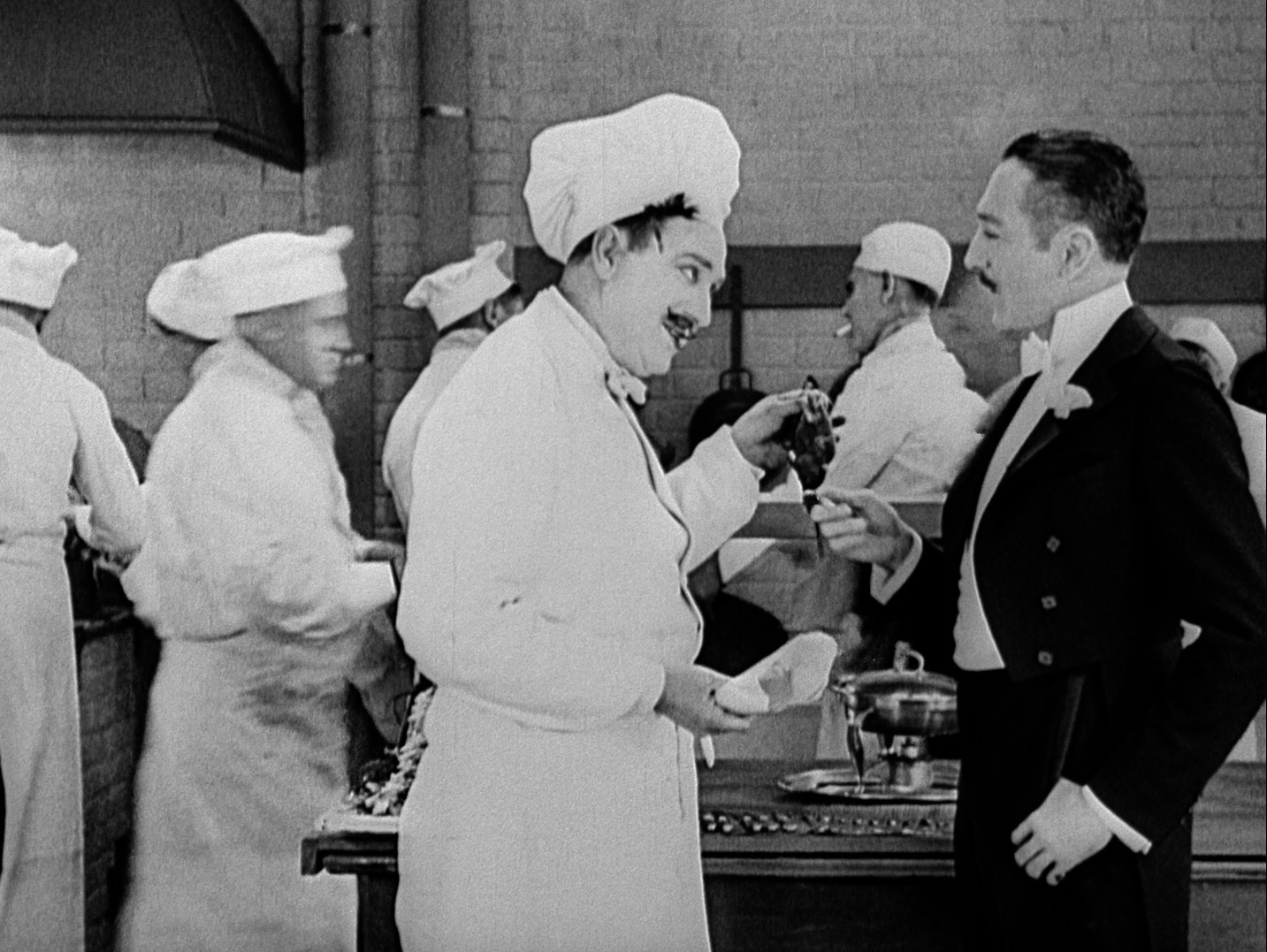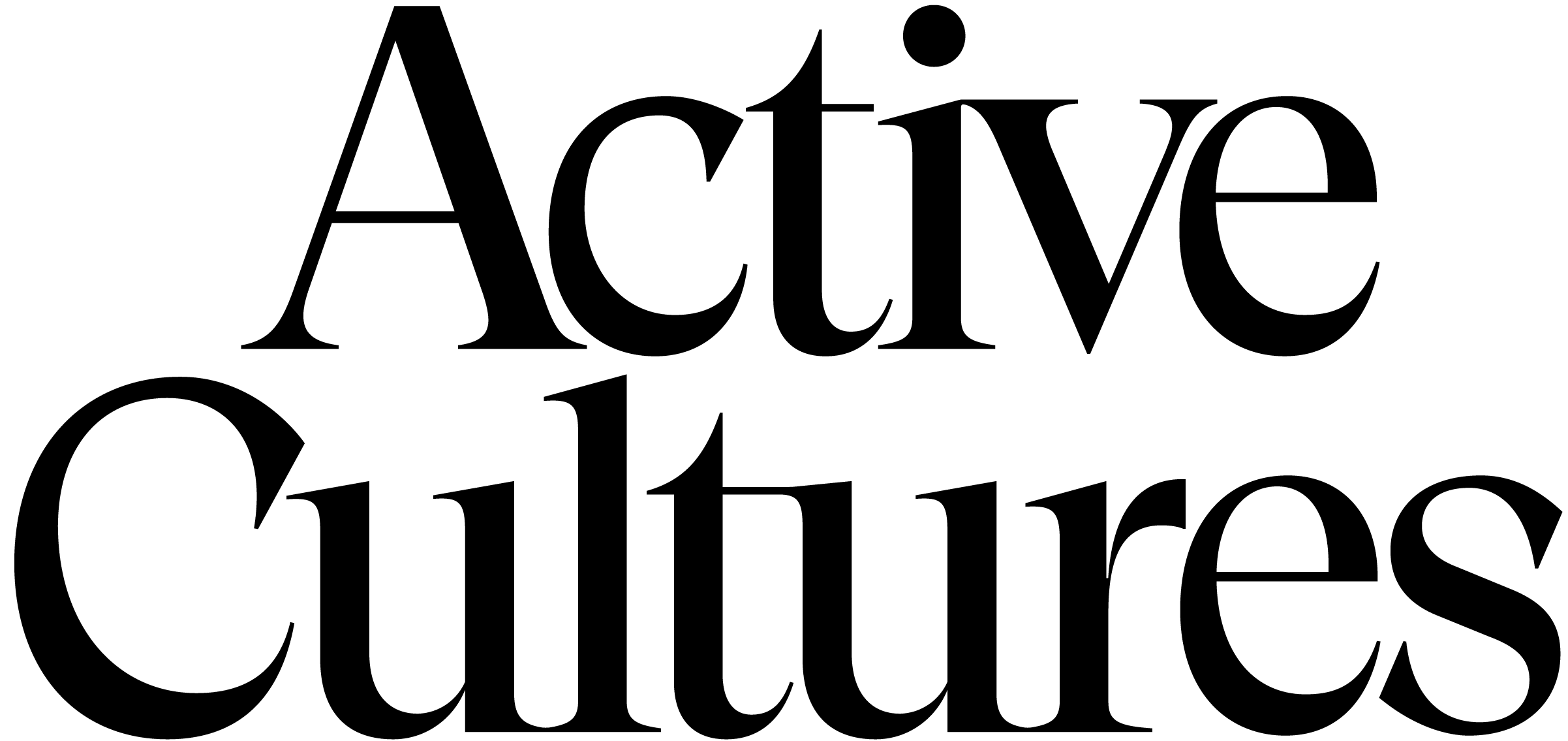"The Unpleasant Pheasant" was published in Active Cultures’ Digest, Issue 06, September 2020.
Images: Charlie Chaplin, A Woman of Paris, 1923. Film stills. Copyright © Roy Export SAS.
Shana Lutker, Anonymous Slapping Sculpture, 2018. Pheasant feathers, leather. 18 x 9 x 1 inches. Courtesy of the artist.
__
Shana Lutker is a Los Angeles-based artist. Shaped by the archives of psychoanalysis and surrealism, her interdisciplinary work in sculpture, performance, writing and installation foregrounds an unstable relationship between subjects, memory, and history. Recent exhibitions include Current LA:FOOD, the LA public art triennial; Virginia Woolf: an exhibition inspired by her writings at Tate St. Ives; and An Analphabet at Vielmetter Los Angeles. She was included in the Whitney Biennial in 2014 and Performa in 2013, and has had solo exhibitions at the Hirshhorn Museum and Sculpture Garden and Perez Art Museum Miami.
Images: Charlie Chaplin, A Woman of Paris, 1923. Film stills. Copyright © Roy Export SAS.
Shana Lutker, Anonymous Slapping Sculpture, 2018. Pheasant feathers, leather. 18 x 9 x 1 inches. Courtesy of the artist.
__
Shana Lutker is a Los Angeles-based artist. Shaped by the archives of psychoanalysis and surrealism, her interdisciplinary work in sculpture, performance, writing and installation foregrounds an unstable relationship between subjects, memory, and history. Recent exhibitions include Current LA:FOOD, the LA public art triennial; Virginia Woolf: an exhibition inspired by her writings at Tate St. Ives; and An Analphabet at Vielmetter Los Angeles. She was included in the Whitney Biennial in 2014 and Performa in 2013, and has had solo exhibitions at the Hirshhorn Museum and Sculpture Garden and Perez Art Museum Miami.
On the night of June 14, 1935, in Paris, not far from the restaurant La Closerie des Lilas, in the middle of the Boulevard Montparnasse, or perhaps, on the sidewalk, there was an altercation: a person was slapped by another person, more than once. The person who was slapped didn't slap back.
André Breton, founder of Surrealism, was the slapper. Ilya Ehrenburg, a prolific Soviet writer, journalist, and cultural figure, was the slapped.
Ehrenburg was born on January 27, 1891 (five years before Breton) in Kiev. From 1925 to 1945, he lived mostly in Paris, as a foreign editor for Russian language newspapers, writing cultural criticism, as well as novels. He came to be known as the leading Soviet propagandist in Paris during World War II. For the purpose of this story, he was an important critic and an authentic Russian Communist, at a moment when Breton and the Surrealists desperately wanted to be recognized by the Party leaders in Moscow.
In July of 1933, Ehrenburg published an incendiary piece of criticism. It was published in French in the newspaper L'Humanité on May 29, 1934. André Breton certainly saw the article, titled "The Surrealists," with Ehrenburg's rough takedown.
The following translation was presented in The Partisan Review:1
Ehrenburg goes on (and on), building his case against these false revolutionaries:
One can see why André Breton might have been upset, coming across this article in the paper in May of 1934. In it, he and his compatriots are called onanists, pederasts, dilletants, and more. Perhaps most random, the argument hinges on this comparison to a scene in a Chaplin film.
Released in 1923, the film was shown in France as L'Opinion Publique (Public Opinion), but is better known by its surprising American title: A Woman of Paris: A Drama of Fate. This means that, writing in 1933, Ehrenburg is referring to a scene in a 10-year-old Chaplin film.
A short scene, of little importance to the plot. It also happens that the film was Chaplin's first drama, and the first feature in which he did not star. It was critically acclaimed, but a total and complete failure at the box office.
In other words: a foul fowl fail.
1. Ilya Ehrenburg, "The Surrealists," trans. by Samual Putnam, Partisan Review (Oct-Nov 1935), 11-16
"The Unpleasant Pheasant" is excerpted and adapted from Chapter 5 of Shana Lutker's forthcoming book, Le "NEW" Monocle: The History of the Fistfights of the Surrealists, and was published in Active Cultures, Digest, Issue 6, September 2020. A live reading of a draft of the chapter was presented at Art Catalogues at LACMA in March 2018.
——
Addendum:
Curious about what sounded like an extreme old-fashioned fad of hanging birds until they were "high," I was quite shocked when the results of my internet search revealed that hanging game birds, for at least a few days, is in fact common and recommended. In these times of uncertainty, as the threat and reality of food scarcity affects more and more people around the world, it might also be useful to know how to prepare pheasant and wild game birds. And so, I offer a mashup of sorts of tips from two contemporary experts on the subject.
The following text is comprised of quotes from Hank Shaw's "On Hanging Pheasants,"1 published in Hunter Angler Gardener Cook, and Cork Graham's article "Pheasants: Hang Em' High,"2 in Cork's Outdoors.
"The idea of hanging shot pheasants or partridges undrawn and in the feathers for days and days just did not seem terribly hygienic or sane to me. Old texts wax rhapsodic about the sublime flavor of 'high' game, which usually means pheasants and usually means birds that have hung for more than a week. This, I decided, was madness. I was wrong."1
"Pheasants, along with waterfowl, can often be improved by leaving the innards in during the aging process. You simply hang them whole up in a cool, airy place."2
"But, if you want to use the innards, you can remove them and stuff some paper-towel in their place." (See Cork Graham for methods of removing innards before hanging.)2
"The suggestion is to hang them by the long tail feathers. The feathers provide protection for the skin against drying out during aging. Pluck the feathers right away and you can still age the bird, but the skin will be unacceptably dried out and unusable."1
"All the bacteria and taste tests converge on two things: 50 to 55°F and 3 to 7 days. That's your takeaway, folks."1
More tips from "an Australian government publication that did some rigorous experiments":1
"Pheasants hung for 9 days at 50°F have been found by overseas taste panels to be more acceptable than those hung for 4 days at 59°F or for 18 days at 41°F. The taste panels thought that the birds stored at 59°F were tougher than those held for longer periods at lower temperatures. Pheasants hung at 50°F became more 'gamy' in flavour and more tender with length of hanging."1
How do you know when it's done?
"For a wild bird, Shaw's suggestion is seven days. This is often the recommendation used in Europe, especially in the UK. Whether you talk to culinary expert Hank Shaw, or one of those cooking writers we both admire, like British writer Clarissa Dickson Wright, you can't go wrong with aging your bird–whether two days, three days or until the head separates from the body.
Yes, in traditional British bird aging, pheasants used to hang until it became so rotten it fell to the ground. Depending on how many days and the temperature, the pheasant would fall, indicating that it was ready to pluck and cook or put in the freezer."2
"The great Jean Anthelme Brillat-Savarin doesn't give a timetable, but says, 'the peak is reached when the pheasant begins to decompose; its aroma develops, and mixes with an oil which in order to form must undergo a certain amount of fermentation, just as the oil in coffee can only be drawn out by roasting it.'"1
"Check the birds everyday to make sure they've not gone over the edge. It's really just a process of checking the smell. There's the birdy smell that the pheasant has when it's freshly killed. Once the bird begins a slight ripening, immediately pluck the bird, wash it off, and then stick it in the refrigerator for at least one or two days. In a Ziploc they'll last for up to 7 months with no problem. If you want to keep them for up to a year and a half, sink them in water in a Ziploc and the ice will keep them from getting freezer burn and drying out, just like a wooly mammoth."2
![]()
![]()
![]()
![]()
André Breton, founder of Surrealism, was the slapper. Ilya Ehrenburg, a prolific Soviet writer, journalist, and cultural figure, was the slapped.
Ehrenburg was born on January 27, 1891 (five years before Breton) in Kiev. From 1925 to 1945, he lived mostly in Paris, as a foreign editor for Russian language newspapers, writing cultural criticism, as well as novels. He came to be known as the leading Soviet propagandist in Paris during World War II. For the purpose of this story, he was an important critic and an authentic Russian Communist, at a moment when Breton and the Surrealists desperately wanted to be recognized by the Party leaders in Moscow.
In July of 1933, Ehrenburg published an incendiary piece of criticism. It was published in French in the newspaper L'Humanité on May 29, 1934. André Breton certainly saw the article, titled "The Surrealists," with Ehrenburg's rough takedown.
The following translation was presented in The Partisan Review:1
IN AN OLD CHARLIE CHAPLIN FILM there is a picturesque if somewhat unappetizing incident. The hero enters a restaurant and orders fowl. He is no ordinary glutton, but the daintiest of epicures, and he likes his bird only when it is decidedly "high." He accordingly goes out into the kitchen to see to it that the pheasant is sufficiently tainted. For connoisseurs of his sort, it is customary to hang the fowl up by the neck. When the neck rots off and the bird drops to the floor, the pheasant is ready to be put into the oven. The chef and his assistants are forced to hold their noses; even their sense of professional duty is not strong enough to enable them to overcome their repugnance. Not so the delighted gourmet; he inhales the spoiled meat odor as greedily as if it came from a cluster of lilies of the valley. I am not quite sure as to whether the Parisian "Surrealists" are to be compared to the pheasant strung up by the neck or to the wily chef. I am not sure as to whether they are mentally sick or merely very clever, these young fellows who make a trade of insanity. Who knows? After a rotten pheasant, the soul may yearn for a phosphorescent wrapper?
For they have one: this weird [phosphorescent] wrapper folds around a periodical entitled Le Surréalisme au Service de la Révolution, or Surrealism in the Service of the Revolution; for the Parisian snobs are very fond of the "revolution," as they are of cocktails and sexual perversions…Preoccupied with theories of masturbation and exhibitionist philosophies, these phosphorescent youths would make themselves out to be implacable revolutionary zealots and the champions of a proletarian purity...
Ehrenburg goes on (and on), building his case against these false revolutionaries:
Their own program, in any event, is clear: they first read Marx, then hang out at a brothel. They have a contempt for the manufacturers of saucepans and like utilitarian pursuits. What difference does it make to them, in what sort of pan the chef prepares their putrid roast pheasant? What interests them is drinking, singing and making love to the girls. This may be, for them, a sufficiently comprehensive program, but there is nothing particularly super-realistic about it. Tens of thousands of young fellows of the well-to-do-class divert themselves in the same fashion... Well, they might at least get out and demonstrate with the unemployed. But the police are in the habit of dispersing the unemployed, and the police carry rubber billies. And that is unpleasant...
One can see why André Breton might have been upset, coming across this article in the paper in May of 1934. In it, he and his compatriots are called onanists, pederasts, dilletants, and more. Perhaps most random, the argument hinges on this comparison to a scene in a Chaplin film.
Released in 1923, the film was shown in France as L'Opinion Publique (Public Opinion), but is better known by its surprising American title: A Woman of Paris: A Drama of Fate. This means that, writing in 1933, Ehrenburg is referring to a scene in a 10-year-old Chaplin film.
A short scene, of little importance to the plot. It also happens that the film was Chaplin's first drama, and the first feature in which he did not star. It was critically acclaimed, but a total and complete failure at the box office.
In other words: a foul fowl fail.
1. Ilya Ehrenburg, "The Surrealists," trans. by Samual Putnam, Partisan Review (Oct-Nov 1935), 11-16
"The Unpleasant Pheasant" is excerpted and adapted from Chapter 5 of Shana Lutker's forthcoming book, Le "NEW" Monocle: The History of the Fistfights of the Surrealists, and was published in Active Cultures, Digest, Issue 6, September 2020. A live reading of a draft of the chapter was presented at Art Catalogues at LACMA in March 2018.
——
Addendum:
How to Hang a Pheasant
Curious about what sounded like an extreme old-fashioned fad of hanging birds until they were "high," I was quite shocked when the results of my internet search revealed that hanging game birds, for at least a few days, is in fact common and recommended. In these times of uncertainty, as the threat and reality of food scarcity affects more and more people around the world, it might also be useful to know how to prepare pheasant and wild game birds. And so, I offer a mashup of sorts of tips from two contemporary experts on the subject.
The following text is comprised of quotes from Hank Shaw's "On Hanging Pheasants,"1 published in Hunter Angler Gardener Cook, and Cork Graham's article "Pheasants: Hang Em' High,"2 in Cork's Outdoors.
"The idea of hanging shot pheasants or partridges undrawn and in the feathers for days and days just did not seem terribly hygienic or sane to me. Old texts wax rhapsodic about the sublime flavor of 'high' game, which usually means pheasants and usually means birds that have hung for more than a week. This, I decided, was madness. I was wrong."1
"Pheasants, along with waterfowl, can often be improved by leaving the innards in during the aging process. You simply hang them whole up in a cool, airy place."2
"But, if you want to use the innards, you can remove them and stuff some paper-towel in their place." (See Cork Graham for methods of removing innards before hanging.)2
"The suggestion is to hang them by the long tail feathers. The feathers provide protection for the skin against drying out during aging. Pluck the feathers right away and you can still age the bird, but the skin will be unacceptably dried out and unusable."1
"All the bacteria and taste tests converge on two things: 50 to 55°F and 3 to 7 days. That's your takeaway, folks."1
More tips from "an Australian government publication that did some rigorous experiments":1
"Pheasants hung for 9 days at 50°F have been found by overseas taste panels to be more acceptable than those hung for 4 days at 59°F or for 18 days at 41°F. The taste panels thought that the birds stored at 59°F were tougher than those held for longer periods at lower temperatures. Pheasants hung at 50°F became more 'gamy' in flavour and more tender with length of hanging."1
How do you know when it's done?
"For a wild bird, Shaw's suggestion is seven days. This is often the recommendation used in Europe, especially in the UK. Whether you talk to culinary expert Hank Shaw, or one of those cooking writers we both admire, like British writer Clarissa Dickson Wright, you can't go wrong with aging your bird–whether two days, three days or until the head separates from the body.
Yes, in traditional British bird aging, pheasants used to hang until it became so rotten it fell to the ground. Depending on how many days and the temperature, the pheasant would fall, indicating that it was ready to pluck and cook or put in the freezer."2
"The great Jean Anthelme Brillat-Savarin doesn't give a timetable, but says, 'the peak is reached when the pheasant begins to decompose; its aroma develops, and mixes with an oil which in order to form must undergo a certain amount of fermentation, just as the oil in coffee can only be drawn out by roasting it.'"1
"Check the birds everyday to make sure they've not gone over the edge. It's really just a process of checking the smell. There's the birdy smell that the pheasant has when it's freshly killed. Once the bird begins a slight ripening, immediately pluck the bird, wash it off, and then stick it in the refrigerator for at least one or two days. In a Ziploc they'll last for up to 7 months with no problem. If you want to keep them for up to a year and a half, sink them in water in a Ziploc and the ice will keep them from getting freezer burn and drying out, just like a wooly mammoth."2




1. Hank Shaw, "On Hanging Pheasants," Hunter Angler Gardener Cook
2. Cork Graham, "Pheasants: Hang Em' High," Cork's Outdoors
Additional resource: Chip Walton, "Cooking with pheasant: new recipes and advice from Hank Shaw," The Splendid Table.

